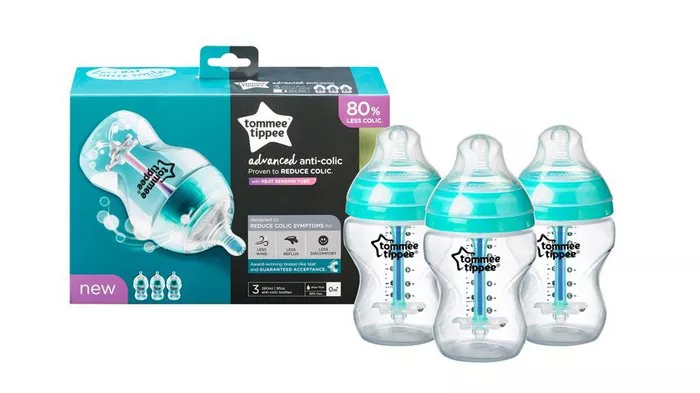Selecting the right baby bottles may seem like a simple task, but with the myriad of options available on the market, it can quickly become overwhelming for new parents. The importance of choosing the correct bottle cannot be overstated, as it directly impacts your baby’s feeding experience and overall well-being. From materials and shapes to nipple types and special features, there are numerous factors to consider when making this crucial decision. In this comprehensive guide, we will walk you through everything you need to know to confidently choose the perfect baby bottles for your little one.
Understanding Your Baby’s Needs
Before delving into the specifics of baby bottles, it’s essential to understand your baby’s unique feeding habits and preferences. Some babies may have reflux or colic issues, while others may have difficulty latching onto certain types of nipples. Consulting with your pediatrician or lactation consultant can provide valuable insights into your baby’s feeding patterns and any potential challenges they may face.
Factors to Consider When Choosing Baby Bottles
1. Material: Baby bottles are typically made from three primary materials: plastic, glass, and stainless steel. Each material has its advantages and disadvantages. Plastic bottles are lightweight and durable but may contain harmful chemicals like BPA. Glass bottles are safe and easy to clean but can be heavier and more prone to breakage. Stainless steel bottles are durable, eco-friendly, and free from harmful chemicals but may be more expensive.
2. Nipple Type: Nipples come in various shapes, sizes, and flow rates to accommodate different feeding preferences and stages of development. Some babies prefer wide-mouthed nipples that mimic the shape of a mother’s breast, while others may prefer standard or orthodontic nipples. It’s essential to observe your baby’s feeding cues and experiment with different nipple types to determine which one works best for them.
3. Anti-Colic Features: Many baby bottles come with anti-colic features designed to reduce the intake of air during feedings, which can help alleviate symptoms of gas, reflux, and colic. These features may include venting systems, collapsible bags, or angled designs. If your baby is prone to colic or digestive issues, choosing a bottle with anti-colic features can make a significant difference in their comfort level during feedings.
4. Ease of Cleaning: Babies can be messy eaters, so choosing baby bottles that are easy to clean is essential for maintaining proper hygiene. Look for bottles with wide openings and minimal parts that are dishwasher-safe for convenience. Avoid bottles with intricate designs or hidden crevices where milk residue can accumulate, as they can be challenging to clean thoroughly.
5. Size and Shape: Baby bottles come in various sizes and shapes to accommodate different feeding preferences and grip styles. Some babies may prefer smaller, more compact bottles, while others may prefer larger bottles with ergonomic shapes that are easier to hold. Consider your baby’s age, feeding frequency, and ability to grasp objects when selecting the size and shape of the bottle.
6. Compatibility with Breastfeeding: If you plan to breastfeed your baby, choosing bottles that are compatible with breastfeeding can help facilitate the transition between breast and bottle feeding. Look for bottles with nipples that mimic the natural shape and feel of a mother’s breast to prevent nipple confusion and ensure a smooth feeding experience for your baby.
7. Special Features: In addition to the basic features mentioned above, many baby bottles come with special features designed to enhance the feeding experience for both babies and parents. These features may include temperature indicators, built-in formula dispensers, or ergonomic grips for easier handling. Consider your specific needs and preferences when evaluating these additional features to determine whether they are worth the investment.
Top Baby Bottle Brands to Consider
With so many options available on the market, it can be challenging to know where to start when choosing baby bottles. To help narrow down your options, here are some top baby bottle brands known for their quality, innovation, and commitment to safety:
1. Dr. Brown’s: Dr. Brown’s bottles are renowned for their patented anti-colic venting system, which helps reduce gas, reflux, and colic in babies.
2. Philips Avent: Philips Avent bottles feature a wide range of nipple options and anti-colic features designed to promote a comfortable feeding experience for babies of all ages.
3. Comotomo: Comotomo bottles are made from soft, squeezable silicone that mimics the feel of a mother’s breast, making them ideal for breastfed babies who are transitioning to bottle feeding.
4. Tommee Tippee: Tommee Tippee bottles are known for their easy-latch nipples and ergonomic designs, making them a popular choice among parents and babies alike.
5. Medela: Medela bottles are designed with breastfeeding in mind, featuring nipples that mimic the natural shape and feel of a mother’s breast to prevent nipple confusion.
Conclusion
Choosing the right baby bottles is a crucial decision that can significantly impact your baby’s feeding experience and overall well-being. By considering factors such as material, nipple type, anti-colic features, ease of cleaning, size and shape, compatibility with breastfeeding, and special features, you can confidently select the perfect bottles for your little one. Remember to consult with your pediatrician or lactation consultant if you have any concerns or questions about your baby’s feeding habits. With the right bottles in hand, you can ensure that your baby receives the nourishment they need to thrive and grow.


